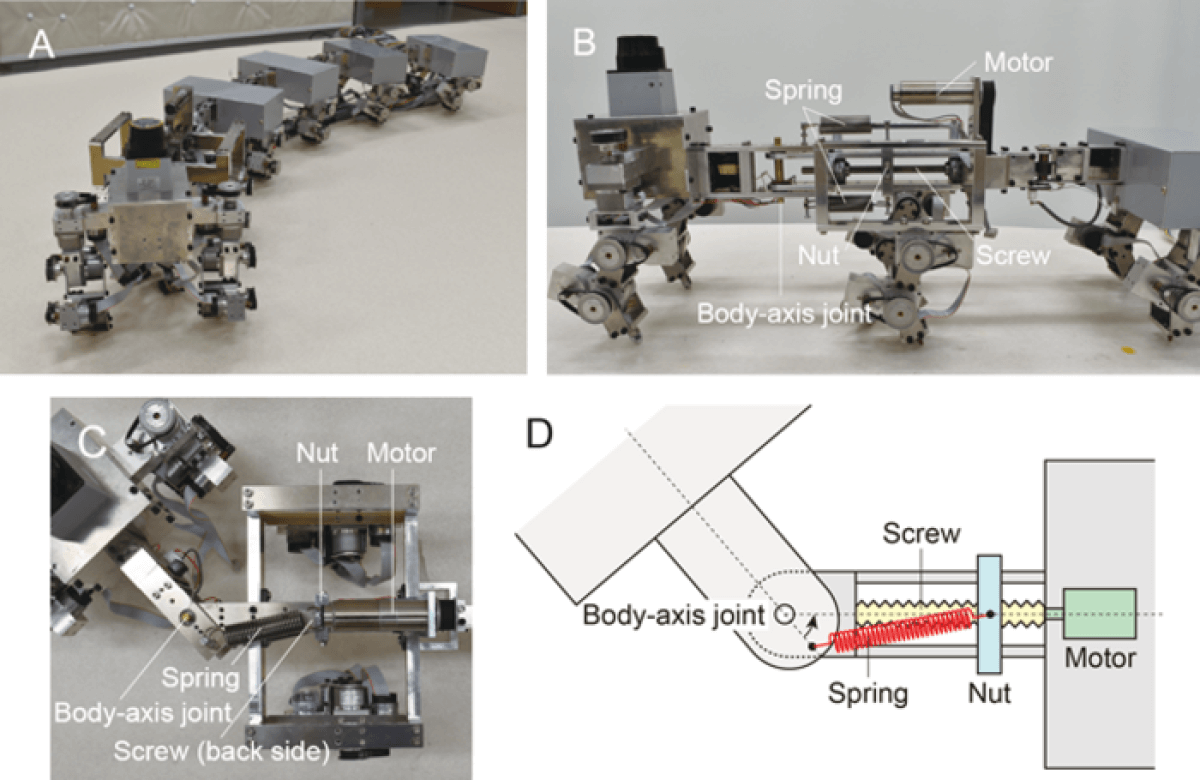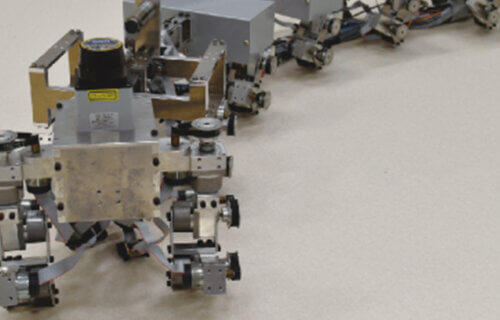OSAKA, Japan — You’ve already seen robot dogs, now scientists in Japan have constructed a robot “centipede” capable of switching its movements from a straight to curved path instantly. Researchers from the Department of Mechanical Science and Bioengineering at Osaka University say this new kind of walking robot takes advantage of dynamic instability to move around and can potentially assist with a wide range of endeavors ranging from search-and-rescue operations to space exploration.
For instance, these rescue robots could traverse uneven terrain to look for survivors — or make their wat across hilly slopes on alien worlds.
By changing the flexibility of the couplings, the robot can turn with no need for complex computational control systems. Circling back to nature for a moment, most animals residing on our planet have developed a robust locomotion system using legs that facilitate a higher degree of mobility over a wide range of environments. However, in the past, engineers who attempted to replicate this approach have usually found that robots with legs are surprisingly fragile.
Even if just one leg breaks down, due to repeated stress, it can severely limit the ability of such a robot to function. Additionally, controlling a large number of joints so the robot can transverse complex environments takes a whole lot of precious computer power. Design improvements, hypothetically, could be extremely helpful in terms of building autonomous or semi-autonomous robots intended to act as exploration or rescue vehicles and enter dangerous areas.

2023, Aoi et al., Soft Robotics
So, the research team at Osaka University developed a biomimetic “myriapod” robot that takes advantage of natural instability, capable of converting straight walking into curved motion. In their recently published study, researchers describe the robot, consisting of six segments (with two legs connected at each segment) and flexible joints. Using an adjustable screw, the flexibility of the couplings can be changed with motors during the walking motion.
Study authors were able to demonstrate that increasing the flexibility of the joints led to a situation called a “pitchfork bifurcation,” in which straight walking turns unstable. Instead, the robot transitions to walking in a curved pattern (either the right or left). In any other scenario, engineers would try to avoid creating instabilities. However, in this case, making controlled use of them actually enables efficient maneuverability.

“We were inspired by the ability of certain extremely agile insects that allows them to control the dynamic instability in their own motion to induce quick movement changes,” says study co-author Shinya Aoi in a university release.
Since this approach does not involve directly steering the movement of the body axis, instead controlling through flexibility, it can greatly lower both computational complexity and energy requirements. The robot’s capacity to reach specific locations was tested, with researchers noting it could indeed navigate by taking curved paths toward targets.
“We can foresee applications in a wide variety of scenarios, such as search and rescue, working in hazardous environments or exploration on other planets,” concludes study co-author Mau Adachi.
Future versions of the robot may even feature more segments and control mechanisms.
The study is published in the journal Soft Robotics.
You might also be interested in:
- A robot snake could help NASA scientists make contact with alien life
- Rats fitted with tiny backpacks are being trained to help earthquake survivors
- Robots with a sense of touch? Scientists create flexible e-skin for ‘soft machines’

